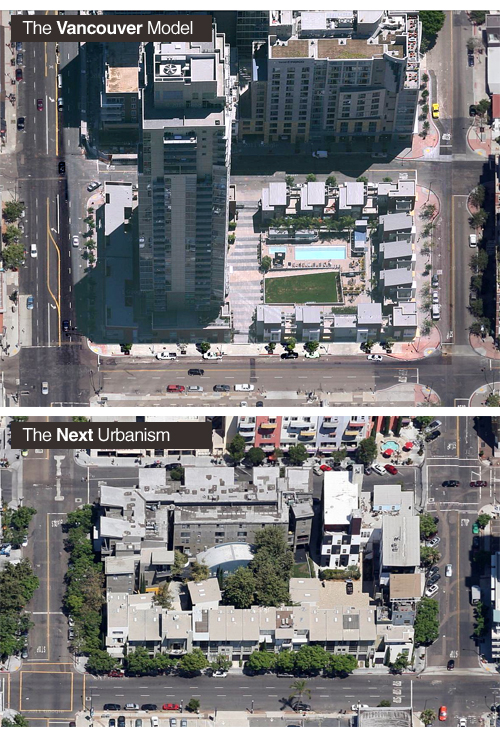A Placemaking Journal
The Next Urbanism
 ‘Tis the season to rejoice and enjoy the brotherhood of all mankind, as well as that of our in-laws…
‘Tis the season to rejoice and enjoy the brotherhood of all mankind, as well as that of our in-laws…
As we ease into 2012, I am officially announcing a New Urbanism victory across North America, as we recently witnessed the end of building suburbia and its physically isolated, segregated lifestyle. Proof? Just this week, the award-winning New Urban News, a publication dedicated to all things New Urbanism, officially changed their title to “Better! Cities and Towns.”
As Robert Steuteville explained on their website, “When we launched New Urban News in 1996, the trend toward walkable, mixed-use planning and development was in its infancy. Cities were still at a low ebb — many of them just beginning to revitalize their downtowns… Today much is different. The sprawl-producing industry has been badly damaged in the financial crash. Markets have changed. A new generation of young adults has emerged with a strong preference for walkable places, while previous generations are also seeing the value of mixed-use neighborhoods.”
Reinforcing my point, this year’s TED Prize was awarded to The City 2.0 to emphasize the cultural, social and physical significance of our collective return to the city, and its role in shaping our future. The TED Prize differentiates this 2.0 version from failed modernist attempts to urbanize our cities by explaining that it “is not a sterile utopian dream, but a real-world upgrade tapping into humanity’s collective wisdom. The City 2.0 promotes innovation, education, culture, and economic opportunity.”
Last month, I wrote about the entry-level urbanism of the Vancouver model that successfully urbanized downtowns across US west. My criticism of the model, a tower on podium with a townhouse wrap, is that it has safely sealed off the interior of the blocks with its few secured residential (private) entries. In fairness, according to former city planner and current UCLA PhD candidate, Neal LaMontagne (find him on Twitter @nlamontagne), Vancouver is building upon its success with an innovative eco-density approach to more livable urbanism.
As we continue Learning from Vancouver*, today’s debate centers around towers versus street level design and hiding the necessary density that shares infrastructure, cuts public expenditure (streets, highways, services), and reduces carbon emissions. The next step, Urbanism 2.0, is to understand the relationship between buildings in regards to how we interact with people above the street, across the street, and between buildings. City blocks should be providing easier access to public and private areas both vertically as well as horizontally, which is the 3D Urbanism Jan Gehl has illustrated in his new book, Cities for People, and has been documenting since his 1971, Life Between Buildings. Urbanism 2.0 will design towards the limits of our senses and the scale of human livability.

The Next Urbanism, 2.0, is building towards immersive city blocks at smaller development increments. These new blocks are well-connected and permeable with greater social interconnectivity. The Next Urbanism will assemble complex places that mix to scale the varied intensities of retail shops, industrial shops, manufacturing and sales on-site, housing, and offices. Add to this the need to re-urbanizing first tier, streetcar suburbs (today’s development battle line), and it’s clear New Urbanists will need to be as effective at this as we were in combating suburban greenfields over the past 20 years.

The rise of our new social technologies and networks are (re)enabling trust between strangers and we are now able to collaborate more efficiently and share information, infrastructure, and costs, enabling a renewed sense of community divergent from community in the past. Now, coupled with our new economy, technology is thereby reinforcing our need and use for connected places within our neighborhoods and city blocks. Think of the neighborhood-by-neighborhood social fabric of turn-of-the-century Paris, its impact on our ex-pat Lost Generation and how that interaction shaped our culture over the last century.

Hemingway and friends. They found each other with a simple #Hemingwaysidewalkparty.
In the late 20th century, the New Urbanism rightly recognized that cities are an amalgamation of neighborhoods, districts and corridors, with neighborhoods forming the basis for where we live, work, play, worship, and interact with the people who provide for our daily needs. The true value of urbanism and technology occurs when we are able to physically connect and share information, resources, ideas, and empathy with each other. These face-to-face interactions build the social fabric that will (re)define our ability to endure and thrive culturally into the 21st century.
–Howard Blackson
*Learning from Las Vegas, originally published by the MIT in 1972, was one of the most influential and controversial architectural books of its era. Its authors—architects Robert Venturi, Denise Scott Brown, and Steven Izenour—famously used the Las Vegas Strip to argue the virtues of the “ordinary and ugly” above the “heroic and original” qualities of architectural modernism.
If PlaceShakers is our soapbox, our Facebook page is where we step down, grab a drink and enjoy a little conversation. Looking for a heads-up on the latest community-building news and perspective from around the web? Click through and “Like” us and we’ll keep you in the loop.


